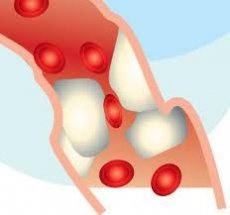New publications
A new target in atherosclerosis treatment is a hormone that controls iron levels
Last reviewed: 01.07.2025

All iLive content is medically reviewed or fact checked to ensure as much factual accuracy as possible.
We have strict sourcing guidelines and only link to reputable media sites, academic research institutions and, whenever possible, medically peer reviewed studies. Note that the numbers in parentheses ([1], [2], etc.) are clickable links to these studies.
If you feel that any of our content is inaccurate, out-of-date, or otherwise questionable, please select it and press Ctrl + Enter.

Scientists from Emory University have identified hepcidin, a hormone that regulates iron levels in the body, which will help develop new treatments for atherosclerosis.
Suppressing hepcidin reduces iron levels in white blood cells found in arterial plaques. The reduced iron levels cause these cells to clear harmful cholesterol from the plaques, a process called reverse cholesterol transport, the scientists say.
The study modeled atherosclerosis in mice. Then, the compound LDN 193189 was administered, which reduces hepcidin levels by blocking its synthesis. The results of the study showed that the mice that were administered this substance had fewer atherosclerotic plaques and cholesterol in these plaques, which can ultimately lead to heart attacks and strokes.
Finn, the study's author, also presented research that showed the effect of hemoglobin, an iron-containing protein, on macrophages.
Finn and his colleagues used isolated human cells and a rabbit model of atherosclerosis to show that macrophages respond to hemoglobin by increasing the synthesis of proteins that transport cholesterol.
In the context of atherosclerosis, iron is toxic because it increases the action of reactive oxygen species, leading to more severe inflammation. Previous research has shown that hemorrhages within atherosclerotic plaques lead to the release of hemoglobin from red blood cells, leading to an expansion of the necrotic zone – a hallmark of an “unstable plaque.”
Macrophages protect the body from the toxic effects of iron by absorbing hemoglobin and promoting detoxification.
 [ 1 ], [ 2 ], [ 3 ], [ 4 ], [ 5 ], [ 6 ], [ 7 ], [ 8 ], [ 9 ]
[ 1 ], [ 2 ], [ 3 ], [ 4 ], [ 5 ], [ 6 ], [ 7 ], [ 8 ], [ 9 ]
